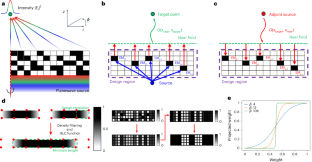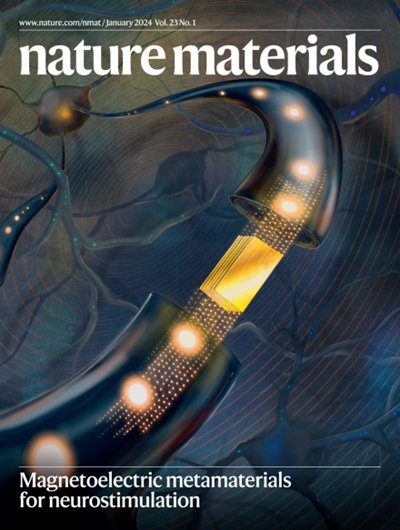Roll-to-plate printable RGB achromatic metalens for wide-field-of-view holographic near-eye displays
IF 37.2
1区 材料科学
Q1 CHEMISTRY, PHYSICAL
引用次数: 0
Abstract
Metalenses show promise for replacing conventional lenses in virtual reality systems, thereby facilitating lighter and more compact near-eye displays (NEDs). However, at the centimetre scale necessary for practical applications, previous multiwavelength achromatic metalenses have faced challenges in mass production and exhibited a low numerical aperture (NA), which limits their practical application in NEDs. Here we introduce a centimetre-scale red, green and blue achromatic metalens fabricated using a roll-to-plate technique and explore its potential for practical applications in NEDs. This metalens is designed through topological inverse design utilizing a finite-difference time-domain simulation for entire areas (~10,000λ). Our design method demonstrates the ability to compensate chromatic aberrations even at the centimetre scale and high NA with low-index materials such as resin suitable for scalable manufacturing. In addition, we developed a compact NED by integrating the metalens with computer-generated holography (CGH). In this NED system, the high-NA metalens address the limitations of narrow field of view and extensive empty space typical of conventional CGH-based NEDs. The CGH optimization model further resolves the challenges of broadband operation and off-axis aberration in centimetre-scale red, green and blue achromatic metalenses. Using a topological inverse design process with finite-difference time-domain simulations, the authors fabricate high-numerical-aperture red, green and blue achromatic metalenses for compact near-eye displays using a scalable roll-to-plate technique.


求助全文
约1分钟内获得全文
求助全文
来源期刊

Nature Materials
工程技术-材料科学:综合
CiteScore
62.20
自引率
0.70%
发文量
221
审稿时长
3.2 months
期刊介绍:
Nature Materials is a monthly multi-disciplinary journal aimed at bringing together cutting-edge research across the entire spectrum of materials science and engineering. It covers all applied and fundamental aspects of the synthesis/processing, structure/composition, properties, and performance of materials. The journal recognizes that materials research has an increasing impact on classical disciplines such as physics, chemistry, and biology.
Additionally, Nature Materials provides a forum for the development of a common identity among materials scientists and encourages interdisciplinary collaboration. It takes an integrated and balanced approach to all areas of materials research, fostering the exchange of ideas between scientists involved in different disciplines.
Nature Materials is an invaluable resource for scientists in academia and industry who are active in discovering and developing materials and materials-related concepts. It offers engaging and informative papers of exceptional significance and quality, with the aim of influencing the development of society in the future.
 求助内容:
求助内容: 应助结果提醒方式:
应助结果提醒方式:


